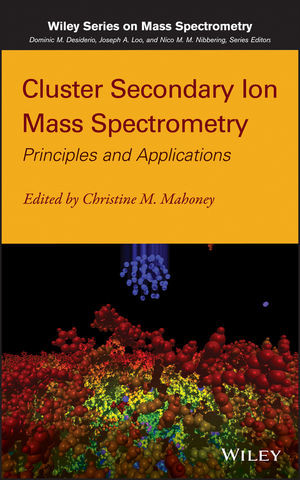

Most ebook files are in PDF format, so you can easily read them using various software such as Foxit Reader or directly on the Google Chrome browser.
Some ebook files are released by publishers in other formats such as .awz, .mobi, .epub, .fb2, etc. You may need to install specific software to read these formats on mobile/PC, such as Calibre.
Please read the tutorial at this link: https://ebookbell.com/faq
We offer FREE conversion to the popular formats you request; however, this may take some time. Therefore, right after payment, please email us, and we will try to provide the service as quickly as possible.
For some exceptional file formats or broken links (if any), please refrain from opening any disputes. Instead, email us first, and we will try to assist within a maximum of 6 hours.
EbookBell Team

4.8
74 reviewsExplores the impact of the latest breakthroughs in cluster SIMS technology
Cluster secondary ion mass spectrometry (SIMS) is a high spatial resolution imaging mass spectrometry technique, which can be used to characterize the three-dimensional chemical structure in complex organic and molecular systems. It works by using a cluster ion source to sputter desorb material from a solid sample surface. Prior to the advent of the cluster source, SIMS was severely limited in its ability to characterize soft samples as a result of damage from the atomic source. Molecular samples were essentially destroyed during analysis, limiting the method's sensitivity and precluding compositional depth profiling. The use of new and emerging cluster ion beam technologies has all but eliminated these limitations, enabling researchers to enter into new fields once considered unattainable by the SIMS method.
With contributions from leading mass spectrometry researchers around the world, Cluster Secondary Ion Mass Spectrometry: Principles and Applications describes the latest breakthroughs in instrumentation, and addresses best practices in cluster SIMS analysis. It serves as a compendium of knowledge on organic and polymeric surface and in-depth characterization using cluster ion beams. It covers topics ranging from the fundamentals and theory of cluster SIMS, to the important chemistries behind the success of the technique, as well as the wide-ranging applications of the technology. Examples of subjects covered include:
This book is intended to benefit any scientist, ranging from beginning to advanced in level, with plenty of figures to help better understand complex concepts and processes. In addition, each chapter ends with a detailed reference set to the primary literature, facilitating further research into individual topics where desired. Cluster Secondary Ion Mass Spectrometry: Principles and Applications is a must-have read for any researcher in the surface analysis and/or imaging mass spectrometry fields.Content:
Chapter 1 An Introduction to Cluster Secondary Ion Mass Spectrometry (Cluster SIMS) (pages 1–11): Christine M. Mahoney and Greg Gillen
Chapter 2 Cluster SIMS of Organic Materials: Theoretical Insights (pages 13–55): Arnaud Delcorte, Oscar A. Restrepo and Bartlomiej Czerwinski
Chapter 3 Ion Sources Used for Secondary Ion Mass Spectrometry (pages 57–75): Albert J. Fahey
Chapter 4 Surface Analysis of Organic Materials with Polyatomic Primary Ion Sources (pages 77–116): Christine M. Mahoney
Chapter 5 Molecular Depth Profiling with Cluster Ion Beams (pages 117–205): Christine M. Mahoney and Andreas Wucher
Chapter 6 Three?Dimensional Imaging with Cluster Ion Beams (pages 207–246): Andreas Wucher, Gregory L. Fisher and Christine M. Mahoney
Chapter 7 Cluster Secondary Ion Mass Spectrometry (SIMS) For Semiconductor and Metals Depth Profiling (pages 247–268): Greg Gillen and Joe Bennett
Chapter 8 Cluster TOF?SIMS Imaging and the Characterization of Biological Materials (pages 269–312): John Vickerman and Nick Winograd
Chapter 9 Future Challenges and Prospects of Cluster SIMS (pages 313–327): Peter Williams and Christine M. Mahoney